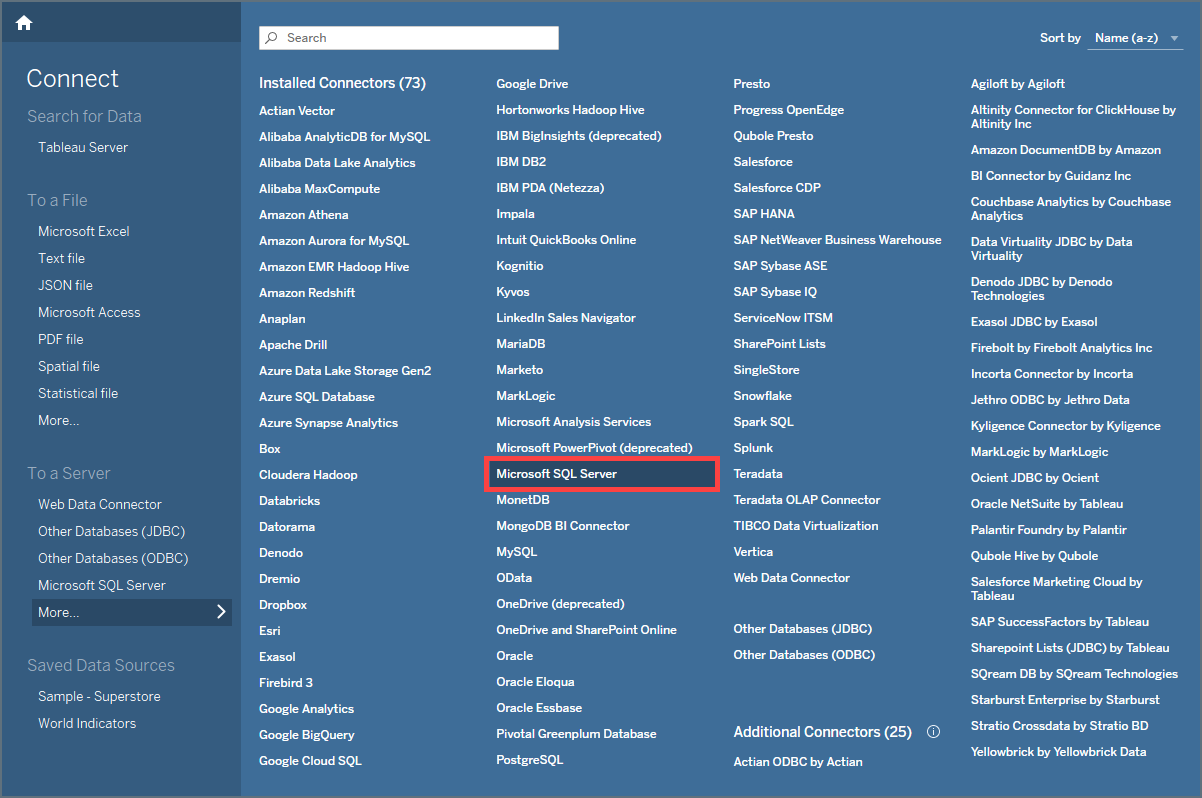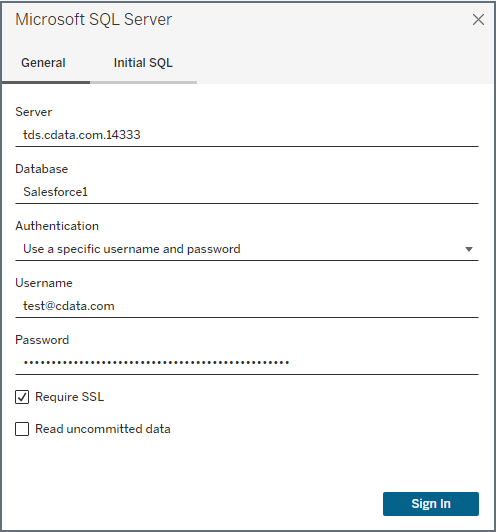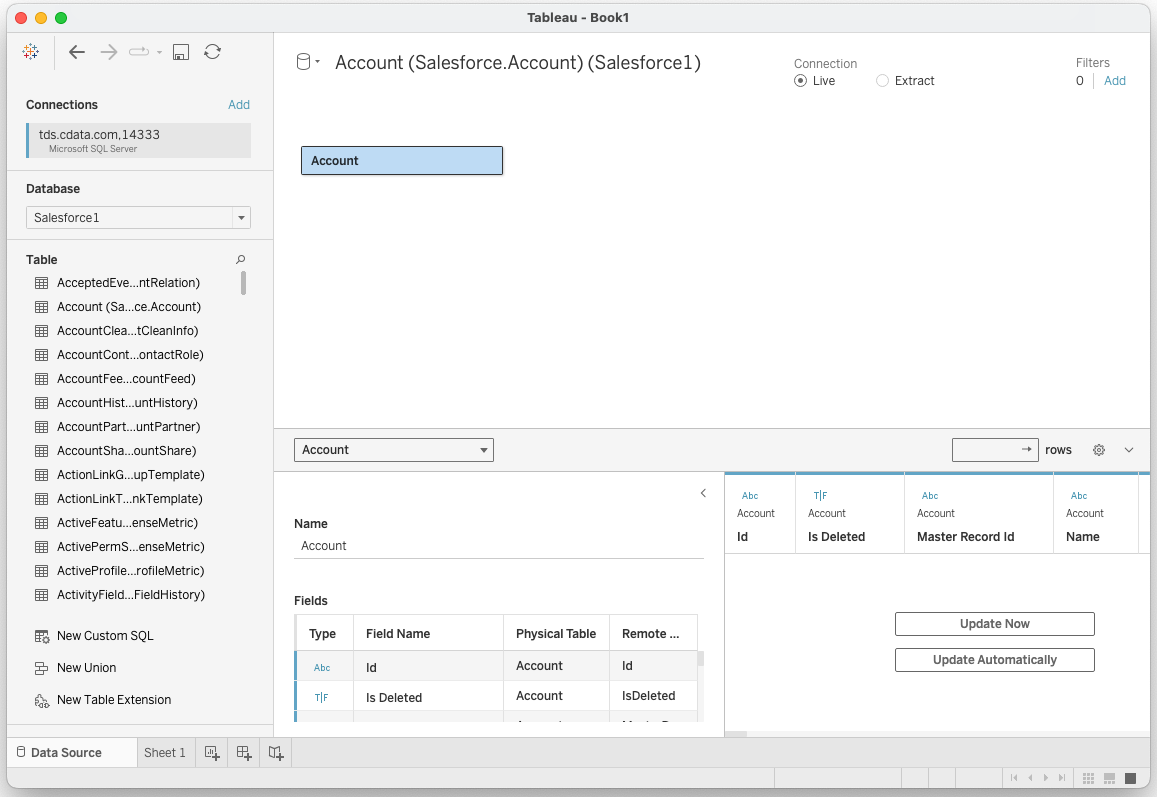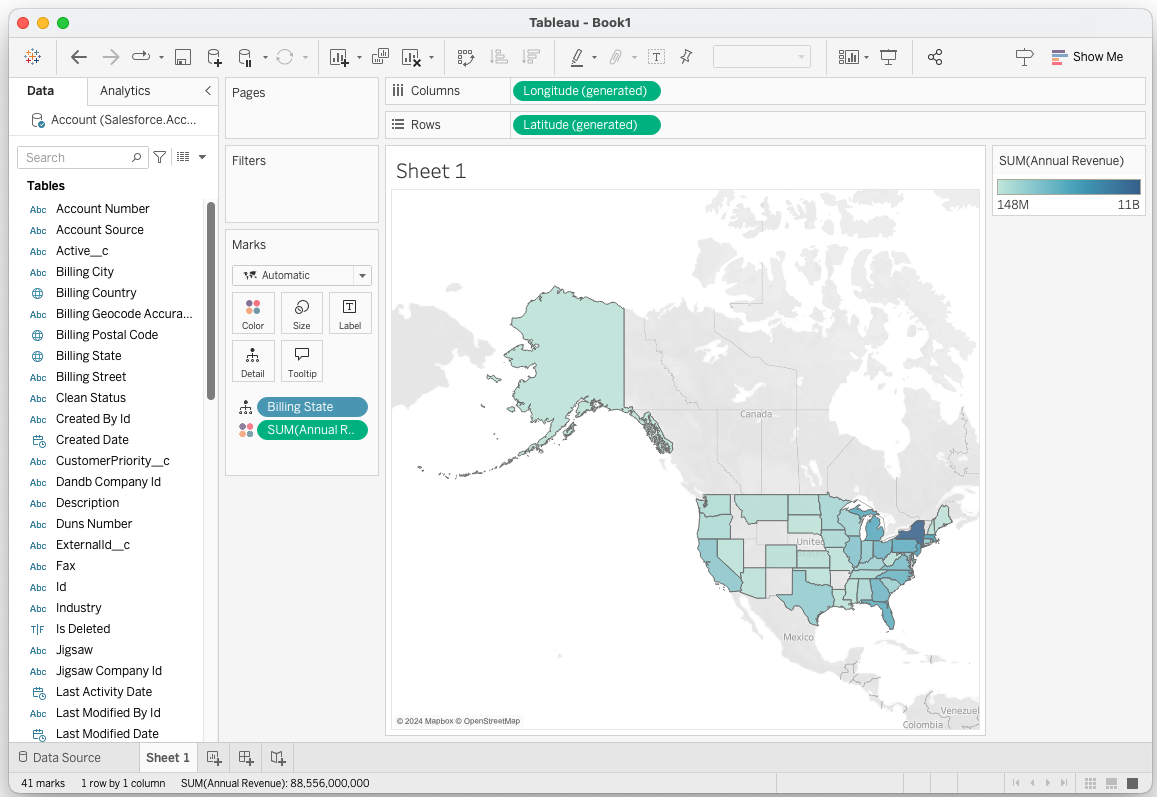Discover how a bimodal integration strategy can address the major data management challenges facing your organization today.
Get the Report →Build Elasticsearch Visualizations in Tableau Desktop
Use CData Connect Cloud to connect to live Elasticsearch data and build visualizations in Tableau.
Tableau is a visual analytics platform transforming the way businesses use data to solve problems. When paired with CData Connect Cloud, you get instant, cloud-to-cloud access to Elasticsearch data for visualizations, dashboards, and more. This article shows how to connect to Elasticsearch and build visualizations from Elasticsearch data in Tableau.
About Elasticsearch Data Integration
Accessing and integrating live data from Elasticsearch has never been easier with CData. Customers rely on CData connectivity to:
- Access both the SQL endpoints and REST endpoints, optimizing connectivity and offering more options when it comes to reading and writing Elasticsearch data.
- Connect to virtually every Elasticsearch instance starting with v2.2 and Open Source Elasticsearch subscriptions.
- Always receive a relevance score for the query results without explicitly requiring the SCORE() function, simplifying access from 3rd party tools and easily seeing how the query results rank in text relevance.
- Search through multiple indices, relying on Elasticsearch to manage and process the query and results instead of the client machine.
Users frequently integrate Elasticsearch data with analytics tools such as Crystal Reports, Power BI, and Excel, and leverage our tools to enable a single, federated access layer to all of their data sources, including Elasticsearch.
For more information on CData's Elasticsearch solutions, check out our Knowledge Base article: CData Elasticsearch Driver Features & Differentiators.
Getting Started
CData Connect Cloud provides a pure SQL Server, cloud-to-cloud interface for Elasticsearch, allowing you to easily build visualizations from live Elasticsearch data in Tableau without installing connectors. As you build visualizations, Tableau generates SQL queries to gather data. Using optimized data processing out of the box, CData Connect Cloud pushes all supported SQL operations (filters, JOINs, etc) directly to Elasticsearch, leveraging server-side processing to quickly return Elasticsearch data.
Configure Elasticsearch Connectivity for Tableau
Connectivity to Elasticsearch from Tableau is made possible through CData Connect Cloud. To work with Elasticsearch data from Tableau, we start by creating and configuring a Elasticsearch connection.
- Log into Connect Cloud, click Connections and click Add Connection
![Adding a Connection]()
- Select "Elasticsearch" from the Add Connection panel
![Selecting a data source]()
-
Enter the necessary authentication properties to connect to Elasticsearch.
Set the Server and Port connection properties to connect. To authenticate, set the User and Password properties, PKI (public key infrastructure) properties, or both. To use PKI, set the SSLClientCert, SSLClientCertType, SSLClientCertSubject, and SSLClientCertPassword properties.
The data provider uses X-Pack Security for TLS/SSL and authentication. To connect over TLS/SSL, prefix the Server value with 'https://'. Note: TLS/SSL and client authentication must be enabled on X-Pack to use PKI.
Once the data provider is connected, X-Pack will then perform user authentication and grant role permissions based on the realms you have configured.
![Configuring a connection (Salesforce is shown)]()
- Click Create & Test
- Navigate to the Permissions tab in the Add Elasticsearch Connection page and update the User-based permissions.
![Updating permissions]()
Add a Personal Access Token
If you are connecting from a service, application, platform, or framework that does not support OAuth authentication, you can create a Personal Access Token (PAT) to use for authentication. Best practices would dictate that you create a separate PAT for each service, to maintain granularity of access.
- Click on your username at the top right of the Connect Cloud app and click User Profile.
- On the User Profile page, scroll down to the Personal Access Tokens section and click Create PAT.
- Give your PAT a name and click Create.
![Creating a new PAT]()
- The personal access token is only visible at creation, so be sure to copy it and store it securely for future use.
With the connection configured, you are ready to connect to Elasticsearch data from Tableau.
Visualize Live Elasticsearch Data in Tableau
To establish a connection from Tableau Desktop to the CData Connect Cloud Virtual SQL Server API, follow these steps.
- In Tableau Desktop, open a new book. Under To a Server, select More, then Microsoft SQL Server.
![Selecting Microsoft SQL Server as the connection type.]()
- Enter your credentials:
- Server: enter the Virtual SQL Server endpoint and port separated by a comma: tds.cdata.com,14333
- Database: enter the Connection Name of the CData Connect Cloud data source you want to connect to (for example, Elasticsearch1).
- Authentication: select Use a specific username and password.
- Username: enter your CData Connect Cloud username. This is displayed in the top-right corner of the CData Connect Cloud interface. For example, [email protected].
- Password: enter the PAT you previously generated.
- Require SSL: leave this selected.
![Configuring the connection to the Virtual SQL Server API.]()
- Click Sign In.
- Select the Database (Connect Cloud connection) you wish to work with and opt for a Live or Extract Connection type.
- Select the table(s) you wish to visualize. If you select multiple tables, define the relationship between the tables using the appropriate columns.
![Selecting tables to visualize (Salesforce is shown)]()
- Select the fields to visualize.
![Visualizing live data (Salesforce is shown).]()
Real-Time Access to Elasticsearch Data from Data Applications
At this point, you have a direct, cloud-to-cloud connection to live Elasticsearch data from your Tableau workbook. You can create new visualizations, build dashboards, and more. For more information on gaining live access to data from more than 100 SaaS, Big Data, and NoSQL sources from applications like Tableau, refer to our Connect Cloud page.














